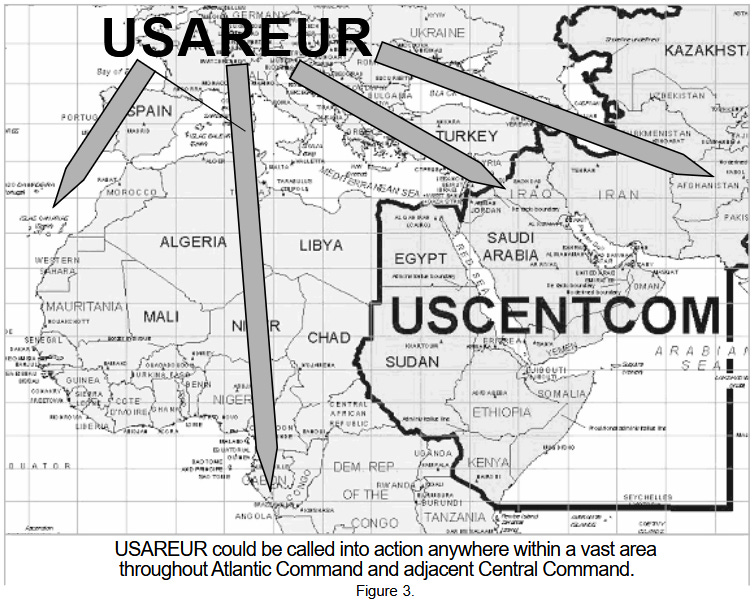Keep Your Potential Enemies Close and Your Friends Closer
Europe is a lily pad to reach enemies and a source for a coalition of the willing
The twentieth century was a period of American wars against European states from Spain (if you'll allow me to go back to 1898) through Germany (twice), Italy, the USSR, and the Serbs (sort of, twice). We have the Russians this century threatening war with NATO and the gathering danger of the European Union that undermines NATO and would, if given the chance, destroy the America-led alliance with a fervor that would make Putin blush.
America needs Europe. Think of it as an asset if you get too angry over its unwillingness to pay more for a common defense. And keep in mind that Europeans don’t need to spend for the naval power, long-distance airlift and sealift, and large nuclear weapons force that America needs. So comparing American and European (or Japanese or anyone else in Eurasia) defense spending isn’t without some complications.
European proposals to send 10,000 or more peacekeepers to Ukraine rely on NATO common standards and operating procedures that survive centrifugal national pull to form a coalition of the willing:
American involvement in NATO keeps Europeans from threatening each other, keeps NATO members from fearing a united Germany, keeps even a weakened but aggressive Russia from thinking about recapturing eastern NATO countries, sets the standard of democracy and rule of law in member countries (and candidates for membership), provides the infrastructure and command relationships to intervene in the arc of crisis from Morocco to Afghanistan, and allows NATO countries to train together so that when a coalition of the willing is needed to intervene outside of the defense of NATO territory, NATO countries can join together and fight effectively.
And Europeans threatening each other is most urgent in regard to the Europeans in the proto-imperial European Union camp. Vance was right to criticize European civil rights. And if Europe suppresses its own citizens in a drive to make them mere subjects, how long before Euro elite hostility toward free America turns into Putin-like demonization of America as an enemy out to subvert their natural political order?
But I digress. But not really.
European NATO allies provide European lily pad to reach the arc of crisis from the Continental United States (CONUS), as I argued in Military Review1:
American bases in Europe already provide a stepping-stone for CONUS-based forces to use to deploy to trouble spots from Angola to central Asia. The strategy of preemption places a premium on rapidly moving a decisive force to overseas theaters. Technology has made the world smaller, but distance is not irrelevant. The Objective Force’s goals are to deploy a brigade in 4 days, a division in 5 days, and 5 divisions in 30 days. Deploying from CONUS, the XVIII Airborne Corps has a long way to travel in a short time to meet the Objective Force’s deployment goals. Being closer would be of great value in meeting these time lines and objectives.
The vast region from West Africa through North Africa, the Balkans, the Middle East, to Central Asia is a large area of potential crises—and some actual ones—as when, in September 2002, U.S. forces deployed from Germany to Africa’s Ivory Coast where a mutiny threatened U.S. citizens’ safety.
There’s some old Objective Force terminology there. But the point remains that Europe is a convenient staging area if we must operate in that neighborhood.
Years after I wrote that article, Russia went from simply a potential threat to an actual threat that expands the arc of crisis to the eastern frontiers of NATO from Norway to Romania. I think that is more of a reason for America to remain in NATO rather than a reason to withdraw across the Atlantic. That’s risky.
Today I’m glad that V Corps rather than XVIII Airborne Corps as I had suggested is the headquarters for Europe-based Army units because the skeleton of a corps I think we need in Europe is no longer an insurance policy for Europe. The Russian geopolitical earthquake hit Europe in February 2022. Europe could be the campaign area.
And Europe linked to America possesses a pool of military capabilities trained and equipped to fight alongside our forces that can join us in a coalition to fight a common threat outside of Europe. While not a large portion of Europe's large but largely static military forces, such an expeditionary force would be a useful military and diplomatic asset for America.
America could do more with that interoperability goal by leveraging American capabilities to increase European NATO capabilities at the brigade level, as I proposed in Army.
Further, America could support a purely European coalition for a mission we approve of—like that hypothetical Ukraine peacekeeping force—by remaining in Europe with facilities; key military capabilities, including logistics, intelligence and transport; and common interoperability standards for equipment and procedures to make sure American assistance could be effective.
America must retain a significant military leadership and capabilities role in NATO to keep our allies on our side. America cannot lead the EU from behind.
NOTE: The map is from my Military Review article cited. Note this was before the establishment of AFRICOM—which encompassed Africa except for Egypt which remained in CENTCOM; and before Israel was moved from EUCOM to CENTCOM. It’s also interesting that Syria and Lebanon were not in CENTCOM then, perhaps because of Turkey and France.
I will again note that I do not have a Ph.D., notwithstanding the article byline. I never claimed that, but took it as a compliment that they assumed I must have one. My email correcting the record was published in a subsequent issue. The online version was corrected but at some point the error made it back into the online version. I gave up. Remember, Doctor TDR:E has a master’s degree. In history.




